Morning magic
This morning I took an early morning walk in the woods. The air was alive with birdsong, and at one point I found myself lured up a trail by the voice of a brown thrasher. This is a bird I’ve just started noticing this year, and its unbroken chatter always makes me smile. It’s the first bird that’s ever tempted me to use the word “loquacious.”
I never did get my eye on the thrasher. But as I neared a bend in the trail, I heard a sudden, panicked snort, followed by thudding and swishing bushes. I’d started a deer.
Rounding the bend, I saw something that startled me: something brown and flattened-looking in the trail. A few steps closer, I saw spots. A fawn. It lay at an awkward angle, and I assumed it was dead. Wondering if I’d interrupted a coyote just starting its breakfast, I reached for my Mace (always carried, never used) and considered turning around. But what if it was not dead, only injured? I couldn’t walk away till I made sure.
A little closer, and I saw that it was breathing.
I remembered the stories I’d heard about fawns so conditioned to lie still where their mothers left them that they wouldn’t move out of the path of an oncoming combine. Horrible. Yet if these stories were true, it was no real wonder that the fawn didn’t move when I approached. I walked carefully past it, thinking the gentlest and most encouraging thoughts I could, and resisting the temptation to stroke its head. It remained motionless the whole time.
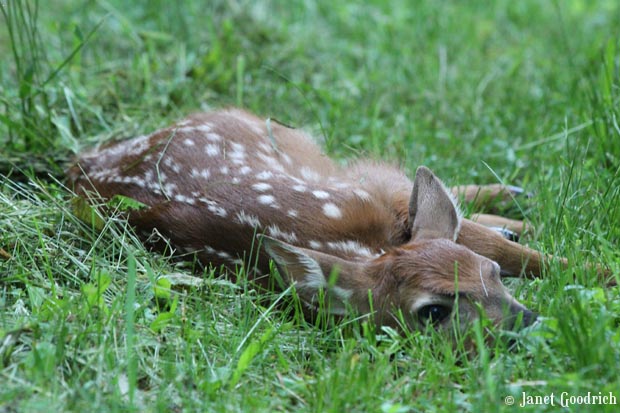
No word seems right to describe the experience.
Later, I read what I could find about white-tailed deer and their fawns (here and here, for starters). I felt reassured that this little fawn was just doing what white-tails do, right down to its awkward position in the grass. I read that the does leave their new fawns in places with low vegetation, and there they lie, heads flattened down as much as possible. The youngest ones remain motionless even when another animal comes close. If there are two or three fawns, the doe will hide them in separate places.
This morning, with only the combine stories in mind to support the notion that the fawn was behaving normally, I walked on down the trail and then waited a minute to see if the doe returned. She had made a wide circle, and through the brush on the other side of the trail from where she’d run away, she came haltingly.
That’s her, flaring her nostrils in another loud snort of alarm at the sight of me. Not wanting to bother this little family unit any further, I headed off.
I couldn’t help but notice the music coming from the surrounding woods. As a lullaby for a young deer, it was superior to any mobile I ever found for my daughters. I recorded a few of the songs, and the sound quality is all right though my video skills are dismal. (I wish I knew how to record sound without video.)
There was the thrasher, who continued endlessly with his one-sided conversation.
Somewhere, a veery sang — a bird I’ve never seen, but whose song I’ve come to recognize. To me, it’s a sound that belongs to secluded places.
And a thrush — I think a hermit thrush, but maybe a wood thrush — sang its lonesome and lovely song. At around the halfway point, the snorts of another startled deer (or two) that had spotted me can be heard.
There were other sights and sounds too, but the fawn was the highlight. One source I looked at said that fawns who survive their first week of life stand a good chance. I’m pulling for you, little one.


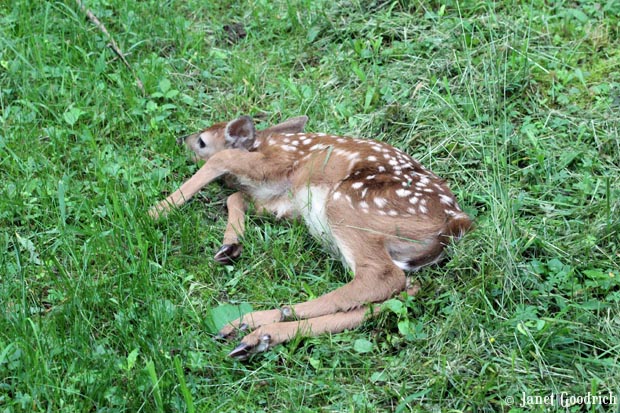
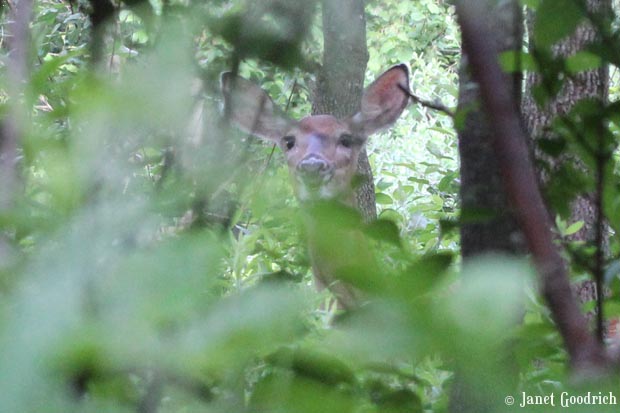
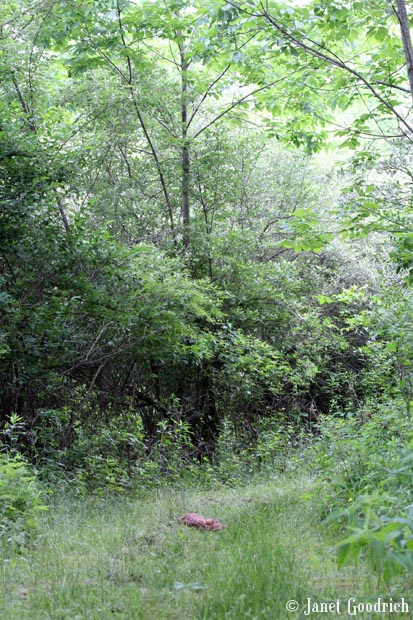

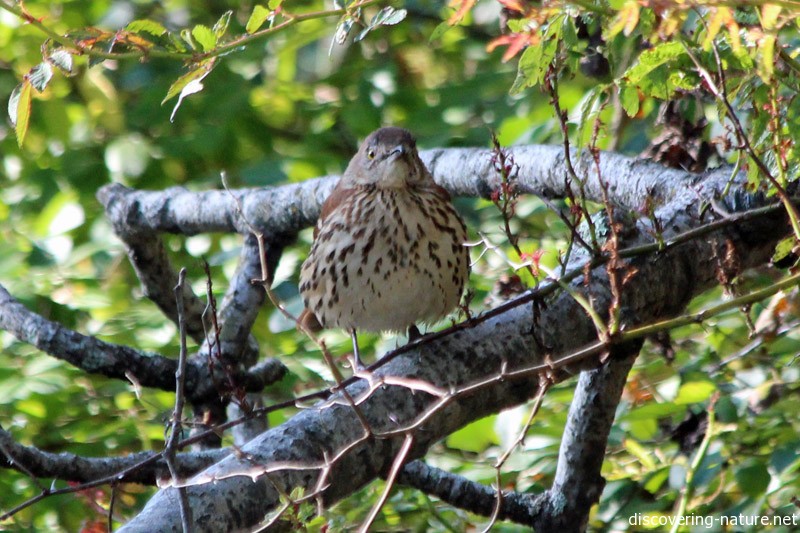

3 Comments
Amy @ Hope Is the Word
Beautiful, Janet! What a gift, to see this fawn and later, its mother. I admire you for arranging your schedule such that you can spend time devoted to nature study and outdoor pursuits. I hope that as my little one gets older, I will be able to do this, too.
How have you learned to recognize birdsongs? I’ve begun to notice them more and more, but I am clueless about which bird produces which sound/song.
Janet
Mostly by getting my eye on them and seeing who’s making what noise. Some of them are confusing because they make a wide variety of sounds, but since I’m focusing on the ones here locally they become familiar after awhile.
We went on a guided walk at Cornell Lab of Ornithology, and that helped too. I learned a couple of new birds there.
stanislawa
so curious & amazing—a beautiful strategy for survival. animals are so superior to humans.